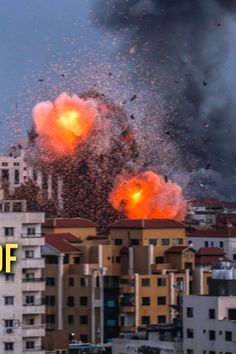The conflict in Yemen has long been a central issue of geopolitical tension in the Middle East. As circumstances change, recent events have highlighted the role of external powers in this intricate war. Among the most notable developments is the recent strike by US B-2 bombers aimed at Iran-backed Houthi forces in Yemen. This article examines the implications of these strikes, the background of the ongoing conflict, and the broader geopolitical context.
Understanding the Houthi Movement
The Houthi movement, known as Ansar Allah, emerged in the northern province of Saada in the 1990s. Initially created as a response to political marginalization and economic neglect, the Houthis have transformed into a significant military and political power in Yemen. With support from Iran, they have secured control over substantial areas of the country, including the capital, Sana’a, since their takeover in 2014.
The Houthis claim to fight against foreign intervention and to establish a more equitable political system. However, their actions, including missile strikes and drone attacks on Saudi Arabia and the UAE, have drawn international condemnation and military retaliation.
The Strategic Importance of Yemen
Yemen’s position at the southern entrance to the Red Sea makes it a critical maritime corridor for global trade, especially for oil shipments. Control of this route is essential for regional powers, particularly Saudi Arabia and Iran, which have significant stakes in the conflict. The ongoing war in Yemen has not only led to a severe humanitarian crisis but has also transformed into a proxy battleground for regional influence between these two nations.
The United States has been actively engaged in the region for years, backing Saudi-led coalitions against the Houthis and conducting operations to safeguard maritime trade routes and counter Iranian influence. The recent B-2 strikes are a part of this broader strategic framework.
The B-2 Spirit: A Strategic Asset
The B-2 Spirit, commonly known as the stealth bomber, is one of the most sophisticated technologies in military aviation. Engineered to penetrate dense anti-aircraft defenses, the B-2’s distinctive design and materials allow it to evade radar detection. With a range exceeding 6,000 miles and the capability to carry conventional and nuclear munitions, the B-2 is vital to the US military’s long-range strike capabilities.
The use of B-2 bombers in Yemen is indicative of the seriousness with which the US views the Houthi threat, particularly regarding their missile capabilities and the potential for further destabilization in the region.
Details of the Recent Strikes
The B-2 strikes, which occurred in early October 2023, targeted Houthi military installations believed to be involved in missile operations against Saudi Arabia. According to US military sources, these installations were identified as launching points for missiles that posed a direct threat to US allies in the region. The precision of the strikes was intended to reduce collateral damage while delivering a clear message regarding the US commitment to countering Houthi aggression.
While exact casualty figures are often complex to verify in conflict zones, reports suggested that the strikes caused considerable damage to Houthi infrastructure. This incident marked a rare deployment of B-2 bombers in direct combat, highlighting the US’s readiness to take decisive action against perceived threats.
Reactions to the Strikes
Reactions to the US strikes have been mixed, reflecting the region’s intricate international relations. The Saudi government praised the action as crucial for protecting its national security. In contrast, Iranian officials denounced the strikes, characterizing them as aggression that escalates tensions in an already volatile environment.
The Houthis, in response, pledged retaliation, claiming that the strikes would not deter them from pursuing their goals. This cycle of retaliation raises worries about the possibility of further escalation, which could involve additional regional players and exacerbate the already severe humanitarian crisis in Yemen.
The Humanitarian Crisis in Yemen
The conflict in Yemen has produced one of the most severe humanitarian crises globally. According to the United Nations, more than 24 million people—approximately 80% of the population—require humanitarian assistance. The ongoing violence, combined with blockades and economic collapse, has resulted in widespread famine, disease, and displacement.
The international community has called for ceasefires and diplomatic solutions, yet the fighting continues. The involvement of external powers complicates the situation further, as different nations have their interests at stake, hindering efforts to achieve a peaceful resolution.
The Broader Geopolitical Landscape
The US strikes against the Houthis must be understood within the larger context of US-Iran relations and the shifting alliances in the Middle East. The Biden administration has signaled a desire to return to diplomatic engagement with Iran, yet actions such as the B-2 strikes suggest a dual deterrence approach alongside diplomacy.
The Houthis’ ties with Iran are particularly problematic for Gulf states. Iran’s backing of the Houthis forms part of a larger strategy to expand its influence across the region, which also involves supporting groups in Iraq, Syria, and Lebanon. This has heightened insecurity among Saudi Arabia and its allies, driving them to seek military assistance from the US and other Western nations.
Conclusion: A Complex Path Forward
The recent US B-2 strikes against Iran-backed Houthis in Yemen highlight the complex and multifaceted nature of the conflict. As military actions continue, the need for a sustainable political solution becomes more pressing. The humanitarian crisis in Yemen demands urgent attention, and the international community must collaborate to address immediate needs and long-term stability.
Although military action may provide a temporary deterrent, the root causes of the conflict necessitate diplomatic engagement and a commitment to rebuilding a nation devastated by years of war. The path forward is filled with challenges, but a unified effort toward dialogue and reconciliation could be crucial for achieving peace in Yemen and the broader region.

Leave a Reply